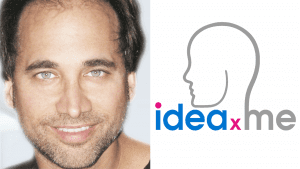Ira Pastor, ideaXme exponential health ambassador and founder of Bioquark interviews Dr. Deborah Mash, Professor of Neurology and Molecular and Cellular Pharmacology at the Leonard M. Miller School of Medicine, and Director of the Brain Endowment Bank at the University of Miami.
Ira Pastor comments:

According to the U.S. National Survey on Drug Use and Health, an estimated 20 million American adults battled a substance use disorder in 2017.
Drug abuse and addiction cost American society more than $740 billion annually in lost workplace productivity, healthcare expenses, and crime-related costs. Globally, the numbers escalate even further off the charts.
The Opioid Crisis
More specifically on a topic we hear quite a lot about today, opioids are a class of drugs that include the illicit drug heroin, as well as prescription pain relievers oxycodone, hydrocodone, codeine, morphine, fentanyl and others. Of the aforementioned 20 million adults affected in the U.S., it was estimated that 2 million had a substance use disorder involving prescription pain relievers. 600,000 had a substance use disorder involving heroin, accounting for tens of thousands of overdose deaths per year in the United States.
Besides overdose deaths, consequences of the opioid crisis include a rising incidence of infants born dependent on opioids, because their mothers used these substances during pregnancy, and an increased spread of infectious diseases, including HIV and Hepatitis C.
In 2019, the most effective opioid withdrawal method still involves substituting and tapering with opioid agonists, such as methadone or buprenorphine, with alpha-2 adrenergic agents being able to help ameliorate symptoms, with the best outcomes seen combining such treatments with appropriate psychosocial interventions.
But most thought leaders are on the same page, saying that much better agents are needed to impact the complex brain changes related to addiction, because the global pharmacotherapeutic armamentarium is still quite small in this area.
Dr. Deborah Mash
So for today’s guest, I could think of no one better to talk with us about this topic and take us into the future, than Dr. Deborah Mash, Professor of Neurology and Molecular and Cellular Pharmacology at the Leonard M. Miller School of Medicine, and Director of the Brain Endowment Bank at the University of Miami.
As a neuroscientist, lecturer and inventor, Dr. Deborah Mash has dedicated more than 25 years of her research career to unlocking the secrets of the human brain.
She is nationally recognized as a leading researcher in neuroscience and brain disorders, playing a pivotal role in more than 300 published studies investigating aging, neurodegenerative and neuropsychiatric diseases.
She works with a team of neuroscientists, pharmacologists, forensic toxicologists and clinical researchers to bring discoveries from the laboratory bench to the patient’s bedside.
Ibogaine
Back in the early 1990s, the U.S. FDA granted Dr. Mash truly a “first of its kind” Investigational New Drug (IND) license to permit her to do human studies on the addiction-stopping capabilities of a Drug Enforcement Agency (DEA) schedule 1 hallucinogenic substance known as Ibogaine. For those unfamiliar with DEA scheduling, schedule 1 drugs, substances, or chemicals, they are defined as “drugs with no currently accepted medical use and a high potential for abuse”. Some examples of Schedule I drugs are: heroin, LSD, marijuana, ecstasy, quaaludes, and peyote.
Dr. Mash and her colleagues had previously discovered through their extensive work on the pharmacology and pharmacokinetics of ibogaine (despite having rather long and intense visionary effects of 24 hours) that it actually serves as a pro-drug that metabolizes into a substance called 12-hydroxyibogamine (or, noribogaine) that had rather profound effects on binding to opioid receptors (and other pleasure receptors in the brain: nicotinic, serotonin, NMDA) serving to block withdrawal effects for long periods of time, allowing addicts to properly come off these drugs, and ultimately remodel and normalize the brain’s neurochemistry and neurobiology.
Additionally, she serves as CEO and Founder of DemeRx Inc, a development stage biotech company looking to clinically develop and commercialize noribogaine pharmaceuticals for addiction withdrawal and other CNS indications.
Dr. Mash is a member of the Society for Neuroscience, the College on the Problems of Drug Dependence, the Research Society on Alcoholism, the American Academy of Neurology, the American Society for Pharmacology and Experimental Therapeutics (ASPET), and the International Society of Brain Research.
On the show we will hear from Dr. Mash:
How she became interested in science, in medicine, and in neurobiology. How she finds herself at the forefront of addiction research in 2019. The ethno-phytomedicial history ibogaine in African culture and the pathway to developing this rather unconventional set of pharmaceutical products, both in the U.S. and internationally. About Demerx Inc. and its business plans in commercializing nor-ibogaine. Finally, we will hear about future CNS indications for nor-ibogaine beyond addiction.

Credits: Ira Pastor interview video, text, and audio.
Follow Ira Pastor on Twitter: @IraSamuelPastor
If you liked this interview, be sure to check out our interview on Chronobiology with Dr. Germaine Cornelissen-Guillaume.
Follow ideaXme on Twitter: @ideaxm
On Instagram: @ideaxme
On YouTube: ideaxme
Find ideaXme across the internet including on iTunes, SoundCloud, Radio Public, TuneIn Radio, I Heart Radio, Google Podcasts, Spotify and more.
ideaXme is a global podcast, ambassador and mentor programme. Our mission: Move the human story forward!™ ideaXme Ltd.


Pingback: A Breakthrough in Spinal Cord Injury Treatment with Dr. Wise Young -
Pingback: Daniel Addario and the War on Drugs